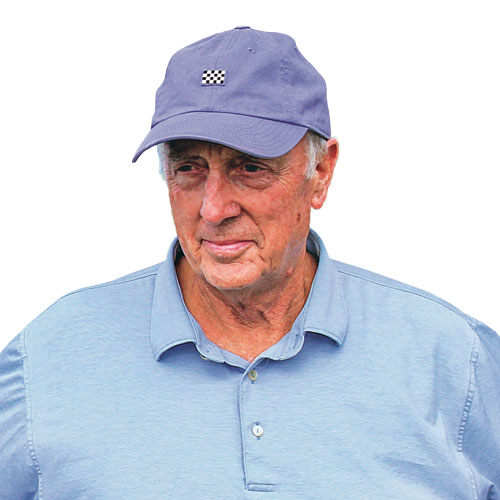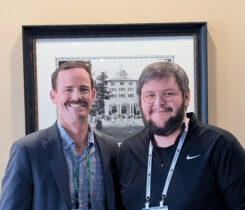Rees Jones, The Open Doctor, offers advice to supers who want to host tournaments
When clubs tell me they’re interested in hosting a professional tournament, the first thing I tell them is: The requirements for professional tournaments are an ever-changing process. It’s not just about length, partly because we don’t know what will happen with the USGA and R&A’s rolled-back ball proposal.
Sometimes, it just comes down to where are you going to put all of the spectators?
Every course is different. Courses with tree-lined holes are effective because you can make the pros choose the right club off the tee. Greens are the key to pro golf; their design needs to receive the normal approach shot and provide a challenging putt.
The pro tours like to see birdies for the spectators and the TV viewers; the PGA of America and the USGA look at it differently. They want par to be more of a standard.
New trends emerging
In the past, it was about relocating the tees to challenge the professionals. Now, we’re building fairway bunkers for the younger and stronger player. You really must space out the bunkers because there’s more distance between the good golfer and the average golfer than ever before. We did this at Torrey Pines before the 2021 U.S. Open.
There’s a trend in bunkers to build them to be easier to recover from and more maintainable. With new bunker technology, the sand doesn’t wash and it doesn’t get too soft. We avoid high lips to allow golfers to aim for the appropriate target.
The sand surface is playable now because of the liners. Being in a bunker isn’t as much of a penalty anymore — it’s a half-shot penalty or less.
At Broken Sound Club in Boca Raton, Fla., host of the TimberTech Championship (the next-to-last tournament in the Schwab Cup playoffs), we had to relocate the 18th green to accommodate expanded grandstands.
The tours want as much spectator capacity as possible on the final holes. The completely redesigned course will now provide for a dramatic event and finish.
We just moved the first tee for better viewing at Bethpage Black at Bethpage State Park in Farmingdale, N.Y., for the 2025 Ryder Cup. The first tee experience is vital at a Ryder Cup. People get to those stands before dawn.
You’ve got to be tough
Superintendents are knowledgeable. They know they’re subject to criticism if they make one mistake — which might not even be a mistake. Maybe the call to have a five-inch rough was wrong.
Hosting a tournament can be a tough task for a superintendent because they’ve been in charge during the preparation, but during the event, the tournament agronomist comes in and takes over.
The superintendent has to comply with the tournament requirements. However, they’re still in charge of every aspect of the planning because they know, more than anyone else, what they’re dealing with.
In my estimation, the superintendent is the most important person regarding any kind of championship or tournament.
Communication between the architect and the superintendent, and then the superintendent and the tournament officials is crucial. Kerry Haigh — PGA Chief Championships Officer — does a wonderful job of making that communication successful.
That’s why players receive PGA of America events so well. I think it’s wonderful to see how much justifiable credit superintendents are getting today for the success of a tournament event.

Rees Jones, ASGCA
Rees Jones, ASGCA, is a second- generation architect following in the footsteps of his father, Robert Trent Jones Sr. Known as “The Open Doctor,” Rees Jones’ architecture work has been seen at seven U.S. Opens, nine PGA Championships, six Ryder Cups, two Walker Cups and three Presidents Cups. A longtime friend of Golfdom, Jones creditspart of his father’s success to the magazine. Jones has been on-hand to present the magazine’s Herb Graffis Businessperson of the Year Award every year since its inception in 2012.











